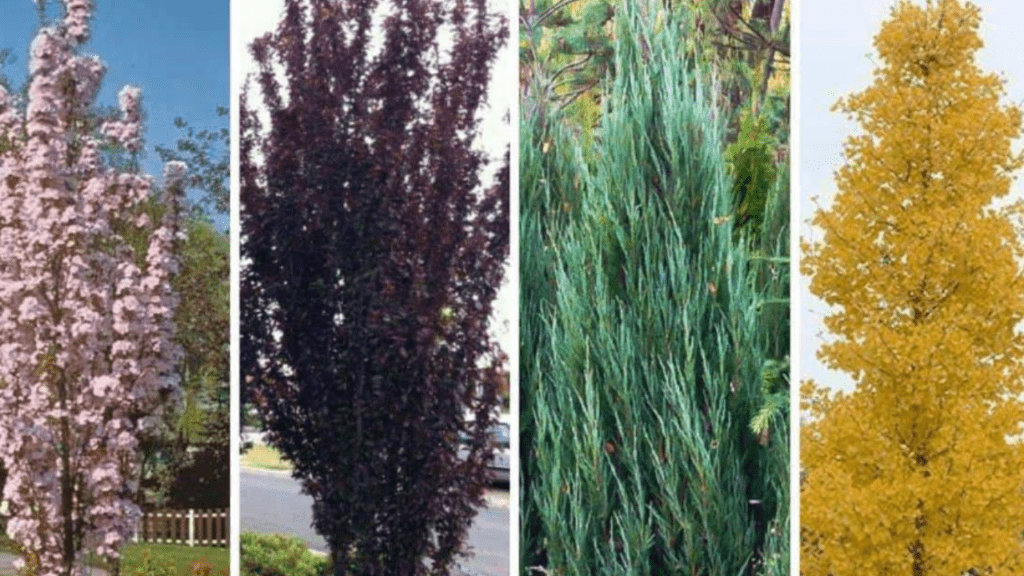
How to Choose the Right Tall Narrow Trees for Your Yard
When it comes to choosing the right tall narrow trees for your yard, there are a few key factors to consider. From climate and soil type to sunlight and maintenance, it’s important to make an informed decision that will benefit both your yard and the environment. In this post, we’ll provide tips and advice on how to choose the perfect tall narrow trees for your specific needs, as well as the benefits of planting these types of trees. Whether you’re looking to add some privacy, create a focal point, or simply enhance the aesthetic appeal of your yard, choosing the right tall narrow trees is an important decision that can greatly impact the overall look and feel of your outdoor space.
Table of Contents
ToggleBenefits of Tall Narrow Trees
Space-saving advantages
One of the main advantages of tall narrow trees is their space-saving nature. These trees can be planted close together, making them an ideal option for small yards or urban spaces where space is limited. By choosing tall narrow trees, you can maximize your yard space without sacrificing the beauty and benefits of having trees in your outdoor environment. Additionally, these trees can provide privacy and screening without taking up a large footprint, making them a practical and visually appealing option for any outdoor space. Whether you want to create a natural barrier between your yard and a neighboring property, or simply add some vertical interest to your landscape, tall narrow trees offer a practical and space-saving solution for enhancing your outdoor environment.
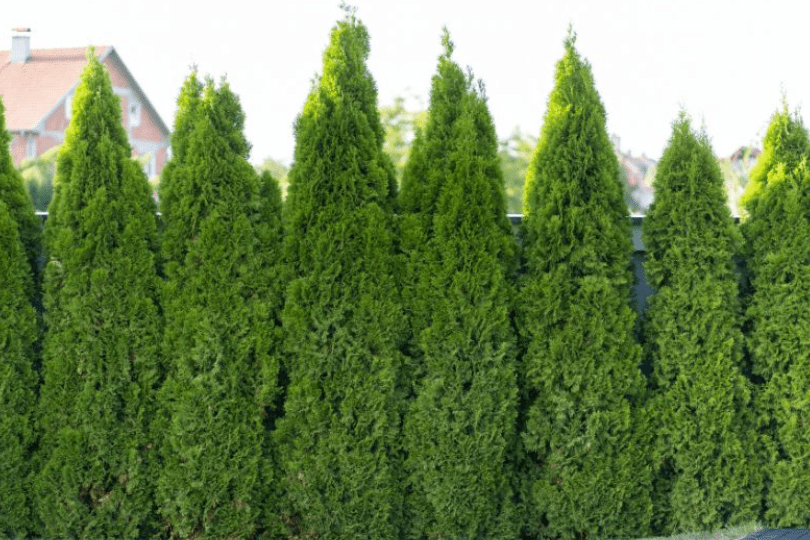
Privacy and screening benefits
Are another key advantage of planting tall narrow trees. These trees can create a natural barrier to block unwanted views or provide privacy from neighboring properties. They can also be used to create a sense of enclosure and seclusion in outdoor living areas. Tall narrow trees can also serve as a screen to block out noise and wind, creating a more peaceful and enjoyable outdoor environment. In addition, they can help to create a visual focal point or add vertical interest to your landscape, enhancing the overall aesthetic appeal of your outdoor space. Overall, the privacy and screening benefits of tall narrow trees make them a valuable addition to any outdoor environment.
Aesthetic appeal and landscape enhancement
Are two important reasons to consider planting tall narrow trees in your outdoor space. These trees offer a practical and space-saving solution for adding vertical interest and visual appeal to your landscape. They can create a natural barrier between your yard and neighboring properties, providing privacy and screening benefits. Additionally, tall narrow trees can help to block out unwanted views, noise, and wind, creating a more peaceful and enjoyable outdoor environment. Their ability to create a sense of enclosure and seclusion in outdoor living areas is another key advantage. Furthermore, these trees can serve as a visual focal point, adding beauty and elegance to your outdoor space. Overall, the aesthetic appeal and landscape enhancement provided by tall narrow trees make them a valuable addition to any outdoor environment.
Factors to Consider When Choosing Tall Narrow Trees
Climate and hardiness zones
Are important factors to consider when choosing tall narrow trees for your outdoor space. It’s crucial to select trees that are well-suited to the climate and hardiness zone in which you live. Some trees may not thrive in certain environments, so it’s essential to choose species that are well-adapted to your specific climate and growing conditions. Consider factors such as temperature, rainfall, and soil type when selecting tall narrow trees for your landscape. By choosing trees that are well-suited to your climate and hardiness zone, you can ensure that they will thrive and provide long-lasting beauty and benefits to your outdoor space.
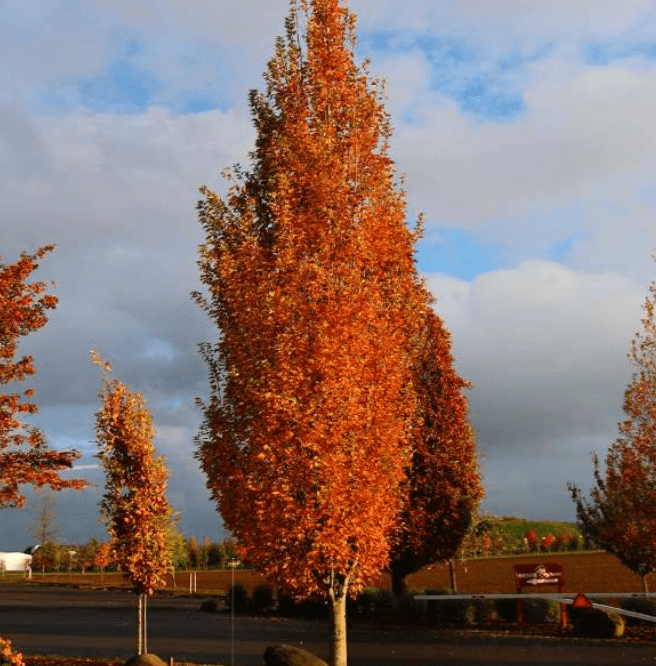
Soil type and quality
Are also important factors to consider when choosing tall narrow trees for your outdoor space. Different tree species have different soil preferences, so it’s crucial to select trees that will thrive in your specific soil type. Consider factors such as soil drainage, pH levels, and nutrient content when choosing tall narrow trees. You may need to amend your soil or select trees that are more adaptable to your soil type in order to ensure their health and longevity. Additionally, soil quality can impact the overall health and growth of your trees, so it’s important to maintain healthy soil through proper fertilization and watering practices. By considering soil type and quality when choosing tall narrow trees, you can ensure that they will thrive and contribute to the overall beauty and functionality of your outdoor space.
Sunlight and shade requirements
Are important factors to consider when choosing tall narrow trees for your outdoor space. Some tree species thrive in full sun, while others prefer partial shade or full shade. It’s important to take note of the amount of sunlight and shade your outdoor space receives throughout the day in order to select trees that will thrive in your specific conditions. Additionally, consider the direction in which your outdoor space faces, as this can impact the amount of sunlight and shade that your trees will receive. By choosing trees that are well-suited to the sunlight and shade conditions in your outdoor space, you can ensure that they will thrive and contribute to the overall beauty and functionality of your landscape.
Growth rate and mature height
Are important factors to consider when choosing tall narrow trees for your outdoor space. It’s important to consider how quickly a tree will grow and how tall it will ultimately become. This will help you determine if the tree is suitable for your space and if it will fit into your desired landscape design. Some trees grow at a faster rate and will reach a taller height, while others have a slower growth rate and will remain more compact. By considering the growth rate and mature height of the trees you are considering, you can ensure that they will meet your specific needs and preferences for your outdoor space. It’s important to choose trees that will complement your desired landscape design and will thrive in your specific environmental conditions.
Top Tall Narrow Trees for Small Gardens
Columnar Trees
Are a great option for small gardens or tight spaces. These trees have a tall, narrow growth habit that makes them perfect for adding vertical interest without taking up a lot of space. Some popular columnar tree varieties include the Italian Cypress, Sky Pencil Holly, and the Upright Japanese Plum Yew. These trees are not only visually appealing but also low maintenance, making them a great choice for small garden spaces. It’s important to consider the sunlight and soil conditions in your outdoor space before choosing a columnar tree, as this will ensure that they thrive and enhance the beauty of your landscape. By selecting the right columnar tree for your specific space, you can create a visually stunning and functional outdoor environment.
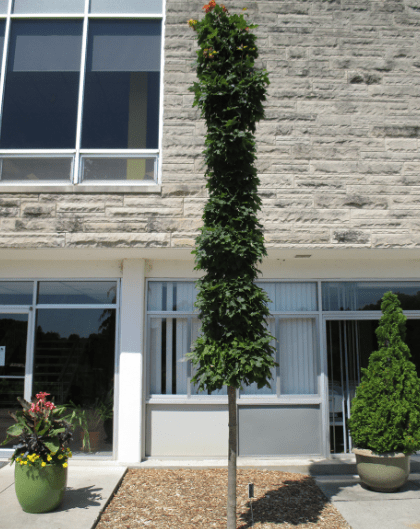
Fastigiate Trees
Are another great option for small gardens, as they have a tall, narrow growth habit that makes them perfect for narrow spaces. Some popular fastigiate tree varieties include the Lombardy Poplar, Swedish Aspen, and the Irish Yew. These trees can add vertical interest and create a sense of height in a small garden without taking up a lot of space. When choosing fastigiate trees for your small garden, it’s important to consider the sunlight and soil conditions to ensure they thrive in your specific environmental conditions. Additionally, fastigiate trees can provide privacy and screening for your outdoor space, making them a functional and visually appealing choice for small gardens. Choosing the right trees for your small garden can enhance the overall design and create a beautiful and cohesive outdoor environment.
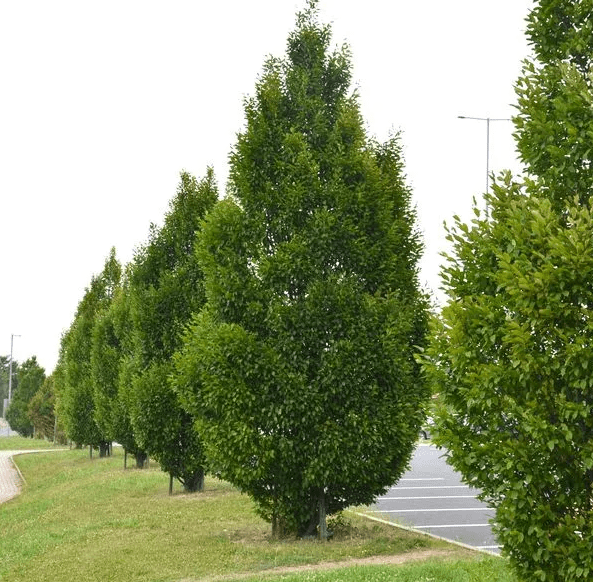
Other Notable Tall Narrow Trees
Examples like Spartan Juniper, Pencil Pine, etc.
When it comes to selecting the right columnar tree for your small garden, there are several options to consider. Fastigiate trees, in particular, are a great choice for small gardens as they have a tall, narrow growth habit that can add vertical interest without taking up too much space. Some popular fastigiate tree varieties include the Lombardy Poplar, Swedish Aspen, and the Irish Yew. These trees can not only add visual appeal but also create a sense of height in a small garden. They can also provide privacy and screening for your outdoor space, making them both functional and visually appealing. It’s important to consider the sunlight and soil conditions in your specific space to ensure that these trees thrive. Additionally, other notable tall narrow trees like the Spartan Juniper and Pencil Pine can also be great choices for small gardens. By selecting the right columnar tree for your small garden, you can create a visually stunning and functional outdoor environment.
Planting Tall Narrow Trees
Preparing the site
Before you start planting tall narrow trees in your garden, it’s important to prepare the site properly. First, consider the sunlight and soil conditions in the specific spot where you want to plant the trees. Make sure the area receives enough sunlight and that the soil is well-draining and suitable for the type of trees you want to plant.
Next, remove any existing vegetation or debris from the planting area. This will help ensure that the trees have room to grow and access to necessary nutrients in the soil. Consider using a weed barrier to prevent weeds from growing around the trees and competing for resources.
Once the site is prepared, dig a hole that is deep and wide enough to accommodate the tree’s root ball. Gently remove the tree from its container and place it in the hole, making sure the top of the root ball is level with the surrounding soil.
After planting, water the tree thoroughly to help it establish its roots in the new location. Consider adding a layer of mulch around the base of the tree to help retain moisture in the soil and protect the roots.
By properly preparing the site for planting tall narrow trees, you can ensure that they thrive and contribute to the visual appeal and functionality of your small garden.
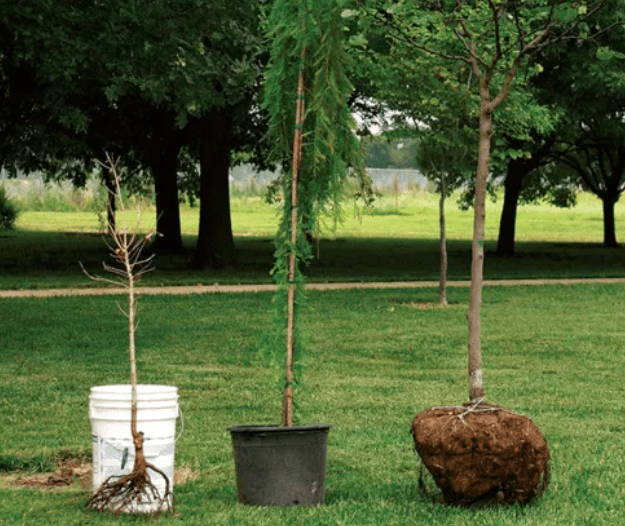
Proper planting techniques
Are crucial for the success of your trees and plants. It’s important to prepare the site by ensuring the trees have enough room to grow and access to necessary nutrients in the soil. Consider using a weed barrier to prevent weeds from competing for resources with your trees. When it’s time to plant, dig a hole that is deep and wide enough to accommodate the tree’s root ball. Gently remove the tree from its container and place it in the hole, making sure the top of the root ball is level with the surrounding soil. After planting, water the tree thoroughly to help it establish its roots in the new location. Adding a layer of mulch around the base of the tree can help retain moisture in the soil and protect the roots. By following these proper planting techniques, you can ensure the health and growth of your trees, contributing to the visual appeal and functionality of your garden.
Spacing considerations
Are important when planting trees in your garden. It’s crucial to give your trees enough room to grow and access the necessary nutrients in the soil. Consider using a weed barrier to prevent weeds from competing for resources with your trees. When it’s time to plant, dig a hole that is deep and wide enough to accommodate the tree’s root ball. Gently remove the tree from its container and place it in the hole, making sure the top of the root ball is level with the surrounding soil. After planting, water the tree thoroughly to help it establish its roots in the new location. Adding a layer of mulch around the base of the tree can help retain moisture in the soil and protect the roots. By following these proper planting techniques, you can ensure the health and growth of your trees, contributing to the visual appeal and functionality of your garden. It’s important to consider spacing and planting techniques to ensure the success of your trees in your garden.
Care and Maintenance of Tall Narrow Trees
Watering needs
One important aspect of caring for tall, narrow trees is ensuring they receive adequate water. These types of trees have a smaller root system compared to wider trees, so it’s important to water them deeply and regularly. During periods of drought, it’s especially important to monitor the soil moisture around the trees and water them as needed. Using a soaker hose or a drip irrigation system can be an effective way to deliver water directly to the tree’s root zone. It’s important to water the trees at the base and avoid wetting the foliage to prevent disease. Additionally, adding a layer of mulch around the base of the tree can help retain moisture in the soil and reduce water evaporation. By paying attention to the watering needs of tall, narrow trees, you can help them thrive and contribute to the beauty and health of your landscape.
Fertilization schedule
Is also an important aspect of caring for tall, narrow trees. These types of trees have specific nutrient requirements that need to be met in order for them to grow and thrive. It’s best to fertilize these trees in the early spring before new growth begins. Using a slow-release fertilizer can provide a steady supply of nutrients to the trees throughout the growing season. It’s important to follow the recommended application rates on the fertilizer package to avoid over-fertilizing, which can be harmful to the trees. Additionally, taking a soil test can help determine the specific nutrient needs of the trees and guide the fertilization process. By staying on top of a regular fertilization schedule, you can ensure that your tall, narrow trees have the nutrients they need to stay healthy and vibrant.
Pruning techniques
Are essential for maintaining the health and appearance of tall, narrow trees. Proper pruning can help to remove dead or diseased branches, improve the tree’s structure, and encourage healthy growth. When pruning tall, narrow trees, it’s important to use the right tools and techniques to avoid damaging the tree. Start by removing any dead or damaged branches, as well as any branches that are crossing or rubbing against each other. This will help to improve air circulation and reduce the risk of disease. Additionally, you can use thinning cuts to remove crowded branches and reduce the overall density of the tree. When making pruning cuts, be sure to make clean, precise cuts at the branch collar to promote proper healing.
It’s also important to consider the natural shape and growth habit of the tree when pruning. For tall, narrow trees, it’s best to maintain a central leader or main trunk, as well as a well-spaced arrangement of side branches to create a strong, balanced structure. Avoid removing too much of the tree’s foliage at once, as this can stress the tree and inhibit its ability to produce energy through photosynthesis. Additionally, be mindful of the timing of your pruning efforts. Prune in late winter or early spring before new growth begins, as this can help to minimize stress on the tree and promote healthy regrowth.
Overall, by using the right pruning techniques and following a regular fertilization schedule, you can help to ensure that your tall, narrow trees remain healthy, strong, and visually appealing.
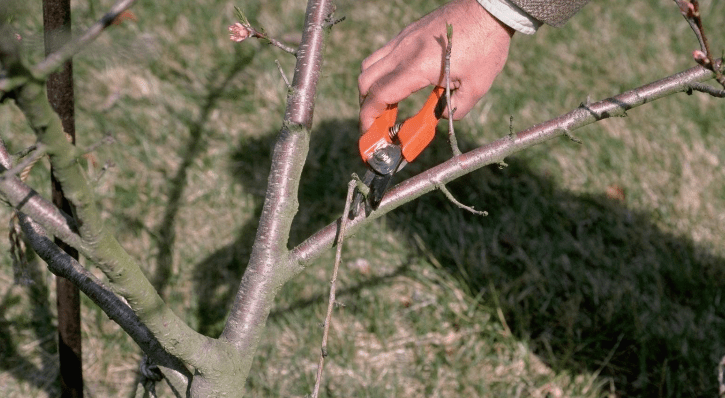
Disease and pest control
Are essential for maintaining the health and vitality of your trees and plants. Regular inspection of your plants for signs of disease or pest infestations is important in catching and addressing issues early on. Consider using environmentally friendly and natural methods of pest control, such as introducing beneficial insects or using horticultural oils and soaps. It’s also important to properly dispose of any infected plant material to prevent the spread of disease. Additionally, practicing good cultural habits, such as proper watering and fertilization, can help to prevent disease and pest issues from arising in the first place. If you do notice signs of disease or pest infestations, consult with a professional arborist or horticulturist to determine the best course of action for treatment. Taking proactive measures to control disease and pests can help to protect the health and longevity of your plants and trees.
Seasonal care tips
Are essential for maintaining the health and vitality of your trees and plants. One important aspect of seasonal care is disease and pest control. Regular inspection of your plants for signs of disease or pest infestations is crucial in catching and addressing issues early on. Consider using environmentally friendly and natural methods of pest control, such as introducing beneficial insects or using horticultural oils and soaps. It’s also important to properly dispose of any infected plant material to prevent the spread of disease.
Additionally, practicing good cultural habits, such as proper watering and fertilization, can help to prevent disease and pest issues from arising in the first place. If you do notice signs of disease or pest infestations, it’s important to consult with a professional arborist or horticulturist to determine the best course of action for treatment.
Taking proactive measures to control disease and pests can help to protect the health and longevity of your plants and trees. By being diligent and proactive in your seasonal care, you can ensure that your landscape remains healthy and vibrant throughout the year.
Using Tall Narrow Trees in Landscape Design
Creating privacy screens
Privacy screens can be a great addition to your outdoor space, providing you with the privacy you desire while adding beauty to your landscape. Consider using tall, narrow trees to create a natural privacy screen. These trees can provide a sense of seclusion without taking up too much space in your yard. Some popular options for creating privacy screens with tall, narrow trees include arborvitae, cypress, and juniper. When planting these trees, be sure to space them appropriately to allow for optimal growth and coverage. Additionally, regular pruning and maintenance will help to keep your privacy screen looking neat and attractive. By carefully selecting and caring for your trees, you can create a beautiful and functional privacy screen in your outdoor space.
Enhancing property lines and borders
Can add value, beauty, and privacy to your outdoor space. One way to do this is by using tall, narrow trees in landscape design. These trees can serve as natural barriers, creating boundaries and defining property lines while also adding visual interest to your landscape. When selecting trees for this purpose, consider options such as Italian cypress, columnar blue spruce, or tall slender oak trees. These trees can provide a sense of privacy and seclusion while also enhancing the overall aesthetic of your property. Additionally, you can use a combination of trees, shrubs, and hedges to create a layered and textured border that adds depth and dimension to your landscape. By carefully planning and maintaining your property lines and borders, you can create a cohesive and visually appealing outdoor space that enhances the overall look and feel of your property.
Common Problems and Solutions
Root issues
Can be a major concern for property owners. Tree roots can cause damage to sidewalks, driveways, and even the foundation of a home. To address root issues, it’s important to choose the right trees and plants for your landscape. Some trees have less invasive root systems, such as Japanese maple, dogwood, or redbud trees. These trees are less likely to cause damage to nearby structures. You may also consider installing root barriers to direct the growth of roots away from sensitive areas. Regular maintenance, such as pruning and root pruning, can also help manage root issues and prevent damage to your property. By addressing root issues and carefully selecting the right trees and plants for your landscape, you can avoid potential damage and maintain the beauty and value of your outdoor space.
Leaf discoloration
Can be caused by a variety of factors, including nutrient deficiencies, pests, disease, and environmental stress. It’s important to identify the cause of the discoloration in order to properly address it. Nutrient deficiencies can be resolved by fertilizing the soil with the appropriate nutrients for the specific type of plant. Pests and disease can be treated with the proper pesticides or fungicides. Environmental stress, such as overwatering or underwatering, extreme temperatures, or poor soil conditions, can be mitigated by adjusting watering schedules, providing shade or protection, and improving soil quality. Regular monitoring and proper care of plants can help prevent leaf discoloration and keep your plants healthy and vibrant.
Pest infestations
Can wreak havoc on your landscape, causing damage to trees, shrubs, and plants. To prevent and manage pest infestations, it’s important to take proactive measures. This includes implementing proper landscaping practices, such as selecting the right plants for your area and maintaining a healthy, balanced ecosystem. It’s also important to regularly inspect your landscape for signs of pests and take appropriate action if an infestation is detected.
To address pest infestations, you can use a variety of methods, including natural predators, organic pesticides, and integrated pest management techniques. By taking a holistic approach to pest management, you can effectively control and reduce the impact of pests on your landscape.
In addition to preventive measures, it’s important to properly identify the type of pests that are causing damage in order to implement the most appropriate treatment. This can include using targeted pesticides or natural remedies to eradicate the pests and protect your plants.
Overall, taking a proactive approach to pest management and addressing issues early can help maintain the health and beauty of your landscape while minimizing the damage caused by pest infestations.
In conclusion, choosing the right tall narrow trees for your yard involves careful consideration of various factors such as climate, soil type, and sunlight. It’s important to research and select trees that will thrive in your specific environment and provide the desired benefits for your yard. Additionally, consulting with a local arborist or gardening expert can provide valuable insight and guidance in making the best choice for your landscaping needs. With the right trees in place, you can enhance the beauty and functionality of your yard while also contributing to a healthier environment.
Frequently asked questions And Answer
Some popular tall narrow trees for yards include Italian cypress, columnar aspen, juniper, and arborvitae. These trees are great for adding height and structure to your yard without taking up too much space.
When choosing a tall narrow tree for your yard, consider the climate, soil type, and amount of sunlight in your yard. Also, think about the mature height and width of the tree, as well as any potential maintenance requirements.
It’s important to consider the spacing between trees when planting tall narrow trees, as well as any potential impact on neighboring structures or utilities. Additionally, consider the potential for the tree to block views or create shade in certain areas of your yard.
Regular pruning and shaping may be necessary to maintain the tall narrow shape of these trees. Be sure to follow proper pruning techniques and consider hiring a professional if needed.
Yes, tall narrow trees can be a great option for creating privacy in your yard, especially if you have limited space. Consider planting a row of these trees to create a natural privacy screen.
